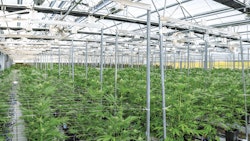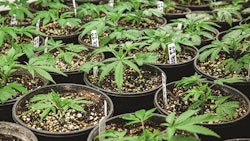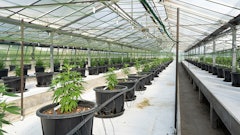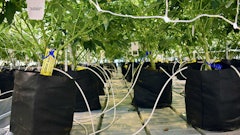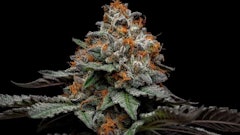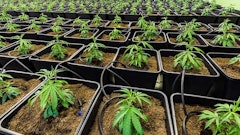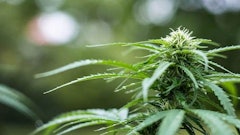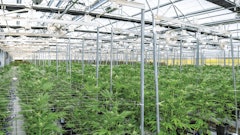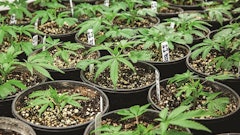
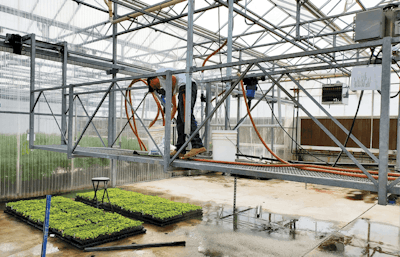
When Strawberry Fields expanded its Colorado operations and started building a new 2-acre greenhouse about five years ago, the owners looked beyond how the rest of the industry was cloning cannabis plants. Examining horticulture markets that have been cloning in large amounts for years inspired the owners to adapt force multipliers and automation, with many ideas coming from large greenhouses across the country.
For the propagation zone of our 2-acre greenhouse, for example, we use irrigation booms—automated systems—instead of aeroponic, hydroponic or humidity domes. Irrigation booms precisely water young plants with minimal waste and upkeep. They hang over plants so there’s no need to drag a hose around, and some you can stand on to eliminate walkways altogether. (We increased our propagation square footage by almost 15%.) Here are four tips for using them.
TIP 1: Set exact parameters.
A boom can be programmed to a room’s dimensions so coordinates can be set to the exact parameters of a group of recently cloned trays. The boom can also water a full room of plants. It can then be set to mist at certain intervals based on environmental controls or desired water amount. When aligned with environmental controls, it can even detect barometric pressure so when humidity drops, it will trigger the boom to mist the selected batch of clones. Leave a space in between any plots that may be on different misting intervals to avoid overspray.
TIP 2: Utilize solenoid valves.
Irrigation booms also allow you to simultaneously select among several different water and nutrient mixtures. Our boom utilizes solenoid valves to separate four different nutrient mixes so we can program it to mist separate nutrients on specific schedules. These schedules provide plants the exact ratio of fertilizer to maximize root development. The combination of humidity and nutrient control helped our team expand from producing 2,000 clones a week, rooting every 28 days, to 14,000 clones a week, rooting every 21 days. Our labor also dropped from three people over seven days to two people in two days.
TIP 3: Avoid pests by not overwatering.
Clones must be clean of all pests and pathogens to ensure their success and a happy, returning customer if you’re selling wholesale. We can control our boom with computers and cell phones to ensure we don’t overwater. (We have a roughly 5,760-square-foot room and use 400 to 500 gallons of water a day.) This helps eliminate pests; fungus gnats and algae are not able to thrive and reproduce, eliminating the majority of the pest problems that may occur. We’re also able to inject state-approved pesticides through the boom to help keep pests at bay.
TIP 4: Sanitize the area with the boom.
Once we are finished with a batch of clones, our team injects sanitizer through the boom to disinfect the area and the misting nozzles. We prefilter the water so the nozzles stay free from debris. In addition, we flush the system to make sure we don’t spray any chemicals on plants.
Altogether, the boom system produces consistent results, eliminates hundreds of labor hours in our greenhouse and allows us to use all of the available growing space for our propagation area effectively and efficiently.







